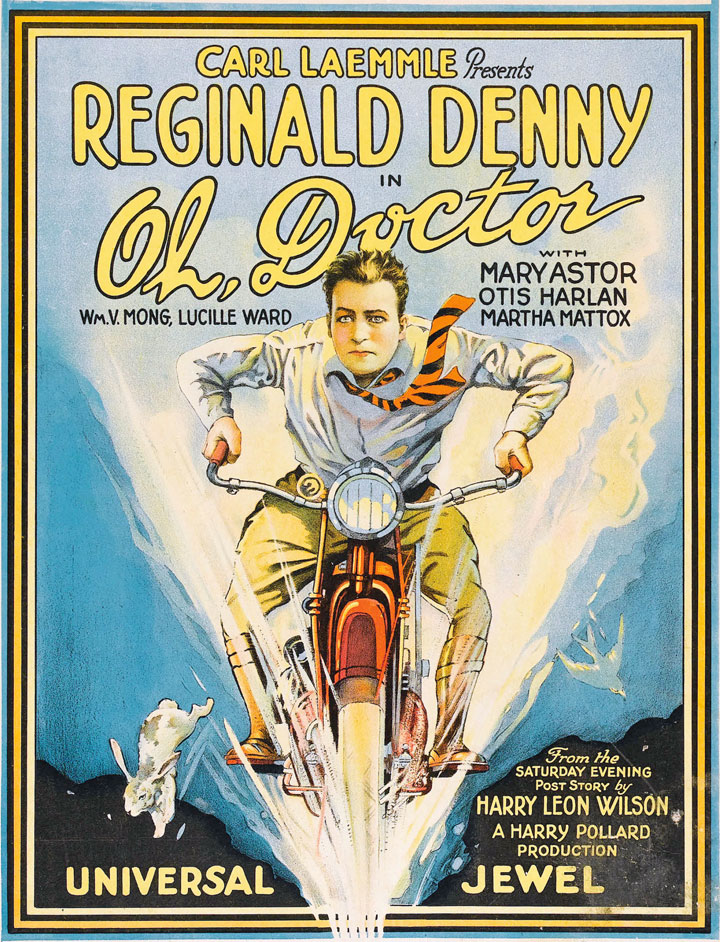Douglas Fairbanks spent six years making feature-length light comedies, mainly playing a semi-typical middle-class young man on a series of adventures. Once he made The Mark of Zorro, there was no turning back to that format. The five- or six-reel non-slapstick comedy genre did not end when Doug moved into costume pictures, but its discussion usually ends there.
The fun-filled hour-long feature-length comedy featuring someone who was not immediately recognizable by their hat, mustache, or unique body language had a second heyday. From the early 1920s through the end of the silent era, comedians like Reginald Denny, Johnny Hines and Douglas MacLean made and released films on a similar release schedule to that of Keaton and Lloyd, usually two a year and sometimes three.
These were the comedy features you went to see while you were waiting for Buster or Harold (or even Charlie) to have a new picture ready. It’s the type of film Paramount had Arbuckle grinding out for about a year, and which Monty Banks tried his hand at in the late 1920s.

Walter Kerr’s The Silent Clowns (Knopf, 1975) devotes a chapter to the work of these gentlemen and their female counterparts such as Dorothy Gish and Bebe Daniels. Johnny Hines’ films have seen a little circulation, as some of them are in the public domain, although some of the better ones are under copyright by Warner Bros., as they were released by First National. MacLean’s films were released by Paramount, but most of them are either lost or survive in incomplete form or at foreign archives. Denny’s survive thanks to having been “accidentally preserved” by being released on 16mm for the home rental market by the Universal Show-at-Home LIbrary, and couple have been restored recently by Universal. Dorothy Gish’s films are lost. The Bebe Daniels films are hard to find, but a couple are around.
This genre of silent comedy features that grew out of Triangle hiring Douglas Fairbanks to adapt his stage hit “The Lamb” and recreate his role in it survived another seven or eight years after Zorro, and are ripe for rediscovery. When they’ve been shown in recent years, they’ve gone over exceptionally well. The hit of last year’s Mostly Lost workshop was a screening of the Bebe Daniels Señorita (1927), which survives at the Royal Belgian Film Archive archive in an excellent 35mm print with French titles.
Buster Keaton’s first feature, THE SAPHEAD, an adaptation of a Fairbanks stage vehicle, keeps Buster under light-comedy wraps, and thereby becomes a tool to measure the difference between light comedy and the great slapstick classics.